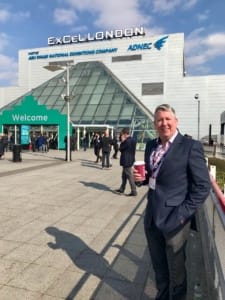In this short post we share 10 CCXP Exam Practice Questions for the Experience Design, Improvement & Innovation component of the overall CCXP exam.
CCXP = Certified Customer Experience Professional. We’re proud to be a CXPA Recognized Training Provider and help people earn their CCXP credential as well as grow in Customer Experience.

A quick look at the official CCXP Exam
The CXPA (Customer Experience Professionals Association) has identified six (6) Customer Experience competency areas for certification and each area is covered in the official CCXP Exam.
The (6) Customer Experience competency areas are:
- Customer-Centric Culture
- Voice of the Customer, Customer Insight and Understanding
- Organizational Adoption and Accountability
- Customer Experience Strategy
- Experience Design, Improvement, and Innovation
- Metrics, Measurement, and ROI
There are currently 100 questions in the official CCXP Exam.
To learn more about the CCXP credential and the CCXP exam process please visit cxpa.org.
Our aim with sharing these practice questions
Our aim is to help and inspire folks who want to gain their CCXP credential or simply improve their understanding of Customer Experience as a business discipline.
That’s why we have developed a bank of more than 250 practice questions for the CCXP Exam. We use these practice questions in our Customer experience training workshops as well as publish selected questions from time to time.
In the next section, we share 10 of our CCXP exam practice questions related specifically to the Experience Design, Improvement & Innovation competency.
These 10 questions are designed to address specific know-how related to this competency and are written in the same multiple choice format found on the official CCXP Exam.
Read through each question and choose the answer that you think is correct – that’s either a, b, c or d.
Remember that the official exam is no books, no notes. So answer as best you can from your current knowledge & experience. Don’t look up any answers!
Here goes – and good luck!
The 10 CCXP Exam Practice Questions
- Which of the following is the BEST description of a human centered design process?
a. Analyze, prototype, ideate
b. Using empathy in your design
c. Ideas need to be restricted to only those that can be funded
d. The right Customer experience changes done the right way
- Select the option where the design steps are in the correct order:
a. Analyze, Research, Ideate, Prototype, Test
b. Test, Prototype, Ideate, Research, Analyze
c. Research, Analyze, Ideate, Prototype, Test
d. None of the options are correct
- The concept of co-creation is BEST expressed as:
a. Asking Employees for their opinions on Customer experience
b. Asking Business Partners for their opinions on Customer experience
c. Asking senior management for their opinions on Customer experience
d. Involving Customers, Employees & Business Partners in the design of Customer experiences
- The best definition of a Prototype is:
a. An early sample, model, or release of a product built to test a concept or process or to act as a thing to be replicated or learned from
b. Involving Customers, Employees & Business Partners in the design of Customer experiences
c. A tool used by car manufacturers to show off their new models
d. None of the above
- If Employees and/or Business Partners will be involved in a new or improved Customer
experience it’s important to:
a. Incorporate their needs and motivations in the design process
b. Ensure that their Standard Operating Procedures are updated and communicated out
c. Conduct a fishbowl analysis to understand the best way to proceed
d. All of the above
- Once a problem or opportunity has been defined the next step is:
a. Research
b. Analyze
c. Ideate & Prototype
d. Prototype & Test
- The risk in creating a ‘prototype’ report or PowerPoint presentation is that:
a. It may have to be translated into multiple languages
b. Usually reports and PowerPoint presentations are not detailed enough
c. They don’t make the proposed improvement or innovation compelling for a broad audience
d. Rituals and storytelling are better methods for communicating proposed innovations
- The concept of a Customer experience ‘sandbox’ is best expressed as:
a. Designated place/location where new ideas can be tested and tried out
b. A calming location where Frontline Employees can relax after dealing with Customers
c. An innovation centre where hackathons can be run
d. The idea of a ‘sandbox’ is an intellectual not physical concept
- The term ‘ideation’ refers to:
a. Involving Customers, Employees & Business Partners in the design of Customer experiences
b. A symbiotic method of idea creation is when multiple ideas are combined, using different elements of each to make a whole
c. Ideation is the creative process of generating, developing, and communicating new ideas
d. All of the above
- Complete this sentence: “Customers _________________________.”
a. Get engaged when they help companies improve processes and experiences
b. Get offended when they help companies improve processes and experiences
c. Don’t feel one way or the other about helping improve processes and experiences
d. None of the above
Would you like to know how you did?
If you’d like to know if your answers are correct we’re happy to help.
We’ve intentionally gone ‘low-tech’ here. There’s no need to register anywhere, set-up an account or pay to access the practice questions.
Once you’ve answered all (10) questions just drop an email to me at [email protected]
Let me know the question # and the answer that you chose (either a,b,c or d). It helps also to tell me which Quiz you took. This Quiz is for Experience Design.
You can use the following format in your email to me:
- a
- d
- c
- c (and so on for all 10 Practice Questions)
I always do my best to answer quickly and let you know which ones you got right and which need correction.
Of course taking 10 CCXP Exam Practice questions won’t fully reflect the experience and effort that have gone into your Customer experience work and goals to date. It’s a lot more than answering multiple choice questions.
But in all these many years of running high level certification programs, we find that the more practice questions you take – and learn from – the better prepared you will be.
Thank you for reading!
10 CCXP Exam Practice Questions for Voice of Customer, Customer Insight & Understanding
Daniel


















 I’ll be presenting my Keynote speech – What kind of experience does your Contact Centre deliver? – at the Customer & User Experience Expo in London next week.
I’ll be presenting my Keynote speech – What kind of experience does your Contact Centre deliver? – at the Customer & User Experience Expo in London next week.


 We used the term ‘barriers’. As in, what specifically, in your job role, holds you back from achieving these values.
We used the term ‘barriers’. As in, what specifically, in your job role, holds you back from achieving these values. And with each opinion I attached a story.
And with each opinion I attached a story.

 We all like to do what we’re good at.
We all like to do what we’re good at.

 This year I’m scheduled to judge awards entries in Dubai, London, Amsterdam and Wiesbaden (Germany).
This year I’m scheduled to judge awards entries in Dubai, London, Amsterdam and Wiesbaden (Germany). Recently I judged a Face to Face presentation for a ‘Group Award’. Unfortunately the Presenter used the word “I'” a lot.
Recently I judged a Face to Face presentation for a ‘Group Award’. Unfortunately the Presenter used the word “I'” a lot. In another judging experience, the Entrants began their Awards presentation by telling the Judges how many other awards they’d won.
In another judging experience, the Entrants began their Awards presentation by telling the Judges how many other awards they’d won. One thing nearly any Judge will tell you is that Entrants sometimes go overboard with ‘superlative words’.
One thing nearly any Judge will tell you is that Entrants sometimes go overboard with ‘superlative words’. Judges can always tell if you haven’t rehearsed your Face to Face presentation. We’re not expecting a performance of Shakespeare’s Hamlet.
Judges can always tell if you haven’t rehearsed your Face to Face presentation. We’re not expecting a performance of Shakespeare’s Hamlet. One of the best Face to Face presentations I witnessed was modelled as a talk show panel.
One of the best Face to Face presentations I witnessed was modelled as a talk show panel. Now and then you get the Entrant who doesn’t follow the directions for the structure of their presentation and what needs to be conveyed.
Now and then you get the Entrant who doesn’t follow the directions for the structure of their presentation and what needs to be conveyed.